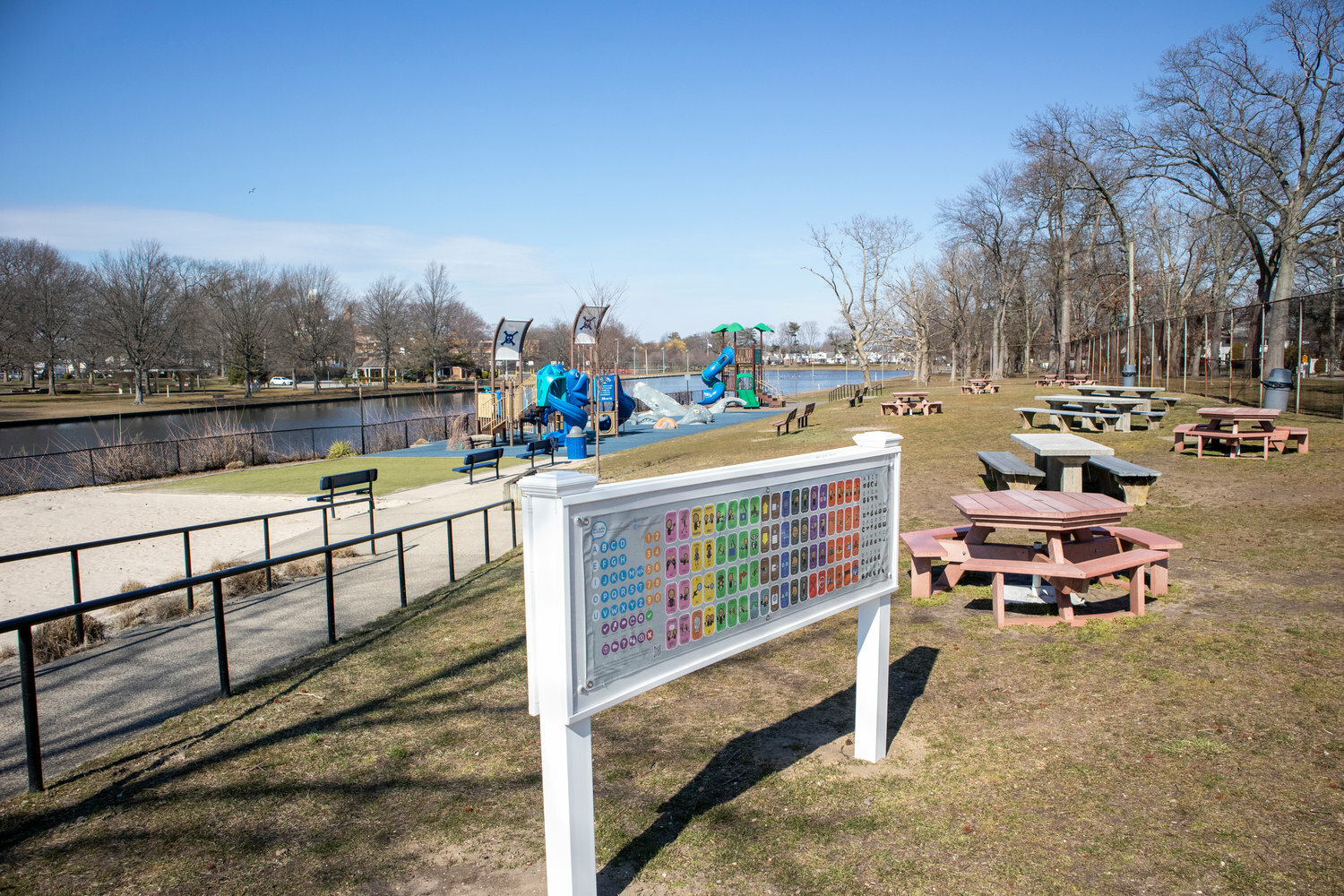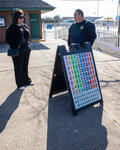Meet the mind behind Valley Stream parks’ boards for inclusive playtime
If you and your child have made a recent visit to the Kay Everson playground in Arthur J. Hendrickson Park, you may have spotted a bright, colorful board hiding in plain sight. It’s a communication board, and it features roughly 70 illustrations paired with common-use, color-coded words or messages, ranging from familiar playground social situations to basic feelings and wants.
The board, which was erected earlier this year by the village of Valley Stream, is a tool meant to ease playground interaction for children with communication delays and speech disorders. The board allows them to share their emotional needs and preferences, work through social situations with others, and gain the self-confidence to share their experiences.
The idea for the board came to resident Melissa Herrera when she took her 6-year-old son to the park and his iPad died. A year earlier, he had been diagnosed with apraxia of speech, a rare disorder caused by brain damage that makes it difficult for the brain to process the messages being sent through it. Someone with apraxia of speech typically knows what he or she wants to say but has trouble forming the words.
“Apraxia is a very difficult diagnosis to receive,” Herrera said, adding that the disorder is under-diagnosed.
Because her son’s speech patterns were different every day, they relied on his iPad, which helped him to communicate his needs and wants. When the device died, however, Herrera assessed her surroundings, and concluded that without a public communication board, she could not help her son meet those needs.
“It occurred to me that maybe I should start the conversation to change that,” she said.
Ever since her son’s diagnosis, Herrera has been an active attendant at Apraxia Kids Foundation conventions. This has given her the knowledge and experience to work with Valley Stream’s Recreation Department director, Jimmy Fitzano, and the village to create a way for children with speech delays and disorders to be able to communicate more easily while they play. “I was really taken aback by their openness to hearing where I was coming from,” Herrera said of village officials.
The boards in the parks not only help those with speech and language disorders communicate, but also foster awareness among other community members, and as a result, a new-found sensitivity and inclusiveness.
TalkToMeTechnologies, the company responsible for crafting the boards, has been selling them in various formats since 2019, when it installed its first prototype in Cedar Falls, Iowa, according to spokesperson Lawrell Wenzel. But while the boards have been sold to hundreds of schools and parks across the country, where many have seen their benefits, they are few and far between in parks across Long Island.
Herrera said she hopes to change that. “I think the speech board should be included in every situation where I can bring my child, she said. “And that includes pools, that includes parks, movie theaters, supermarkets — anywhere my child might need to communicate, we should be offering inclusive language and inclusive efforts.”
Additional reporting by Juan Lasso.
Have an opinion on this article? Send an email to jlasso@liherald.com.









